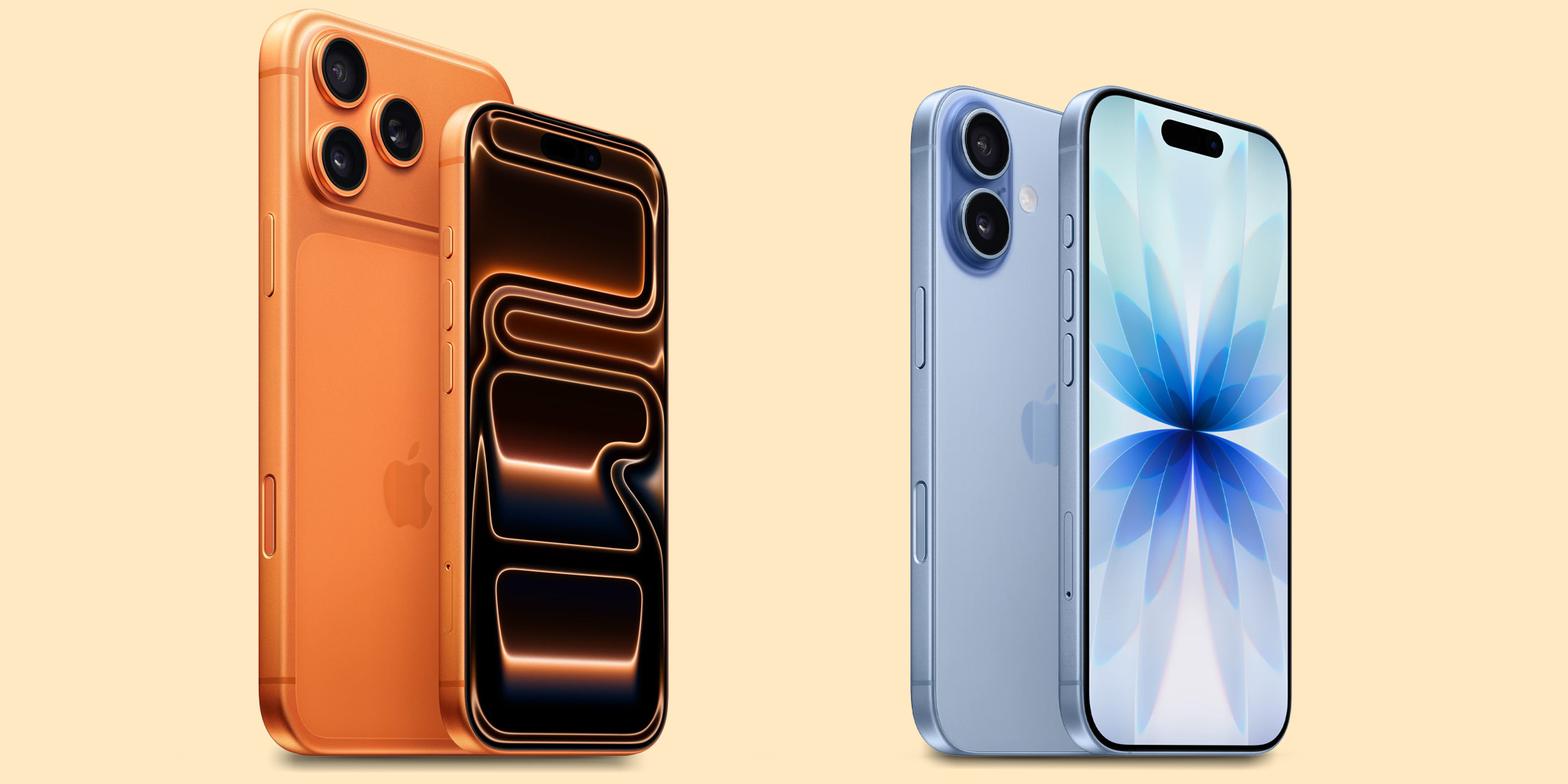By clicking a retailer link you consent to third-party cookies that track your onward journey. This enables W? to receive an affiliate commission if you make a purchase, which supports our mission to be the UK's consumer champion.
Which Apple iPhone should I buy?

Apple iPhones are incredibly popular, but they're also very expensive, especially if you go for the latest iPhone 17 range.
Thanks to Apple's long support periods (iPhones tend to get support for more than six years from launch), the savvy shopper can save by picking the right model, which isn't always the latest.
Our tests enable you to compare exactly how well different generations of iPhone performed in our labs, plus find out what else you need to know about making the right purchase.
See how many iPhones made it into our guide to the best smartphones.
Looking for a discount on a smartphone? We've rounded them all up in our Best Black Friday mobile phone and Sim-only deals.
Best iPhones - top-scoring iPhones from our tests
Apple hasn't always got it right. We've seen older iPhones outperform the latest model, so there are examples where you can make savings with an older phone that's just as good or better.
Top rated
Top rated
Check test results for more than 20 models of iPhone in our Apple iPhone reviews.
How much do Apple iPhones cost?

Apple iPhones are typically very expensive, with no particularly budget-friendly options when you buy brand new.
The iPhone 17 series is Apple's latest release. Unlike we've seen for the past few years, there are five phones in the series:
- iPhone 17 Pro Max. It is the highest-spec, and most expensive, phone in the 17 series. It has a premium triple-lens camera system with an exclusive 8x optical zoom and a huge 6.9-inch screen. Launch prices: 256GB (£1,199), 512GB (£1,399), 1TB (£1,599), 2TB (£1,999)
- iPhone 17 Pro. Has a powerful triple-camera system where all three lenses are 48Mp, but with a slightly smaller 6.3-inch screen. Launch prices: 256GB (£1,099), 512GB (£1,299), 1TB (£1,499)
- iPhone Air A brand-new, ultra-thin model that replaces the Plus, with a large 6.5-inch display but only a single rear camera. Launch prices: 256GB (£999), 512GB (£1,199), 1TB (£1,399)
- iPhone 17. The standard model in the 17 series, but it gets a major upgrade with a super-smooth 120Hz ProMotion display and a dual 48Mp camera system. Launch prices: 256GB (£799), 512GB (£999)
- The iPhone 16e is the cheapest iPhone that Apple has released since 2022 and has just one rear camera lens, but it still gets Apple Intelligence. (SQUIRREL_TEXT_50019879).
- The most recent iPhone 17, 16, 16e, 15 and 14 series don't have the small-screen models like the iPhone 13 Mini and iPhone 12 Mini, although you will find a smaller screen on the mid-range iPhone SE 2022 (SQUIRREL_TEXT_12853025).
Not in a rush to upgrade? iPhone prices often drop when a new model comes out
If you're not committed to always having the latest iPhone, prices of older iPhones typically drop when there's a new kid on the block, even if not by much. For instance, when the iPhone 17 (256GB) launched at £799, the iPhone 15 (128GB) was £599, and the iPhone 14 (128GB) was £495.
Take a look at our guide to the best iPhone deals to see how much you could save with an older handset.
Is it worth buying an Apple iPhone Pro or Pro Max?
There are a few reasons why the Pro and Pro Max iPhones are more expensive than the standard models, but the main upgrades you're paying for are the cameras. This includes the addition of a telephoto lens to improve the quality of zoomed-in pictures. Other features combine with the high-resolution lenses to get you professional-looking shots, especially in unusual conditions.
Usually, the only difference between the Pro and the Pro Max iPhones is the physical size of the device. However, in the 15 series, the Pro Max got some extra camera features. The most significant is a 5x telephoto camera for optical zoom. This is to give you clearer images from a distance when you zoom in. Both Pro variants in the latest 17 series have these zoom capabilities.
Trade-ins are a great way to save on a new phone – find out how to recycle your old smartphone and get some extra cash.
Small-screen iPhones – the SE and Mini range

Small-screen iPhones are still on the market, and Apple has released two new models since September 2021. Expect a smaller screen and a smaller battery but not necessarily less power.
Apple first introduced a 'mini' version of its standard release in November 2020 with the iPhone 12 Mini. Compared to the iPhone 12, the iPhone 12 Mini has a smaller 5.4-inch OLED display and a smaller 2,227mAh battery. However, it has the same two 12Mp rear cameras and software.
The more recent iPhone 13 Mini has an upgraded processor, a bigger battery and starts with 128GB of storage.
A year before the iPhone 12 Mini, we got the first iPhone SE. This is a more limited, but cheaper, iPhone. Apple has released two more versions since then – the iPhone SE 2022 is its latest offering. The iPhone SE 2022 has one rear camera lens, a 2,018mAh battery and a 4.7-inch LCD screen, which is smaller than the iPhone 13 Mini.
Looking to boost your iPhone setup? See our pick of the best iPhone accessories.
What to look for when choosing an Apple iPhone

There are a few things to think about when deciding which iPhone to choose. Here’s our shortlist of what to consider:
- Size If you want an iPhone that you can easily use with one hand, the iPhone SE or Mini variations are a good bet, with a 4.7-inch or 5.4-inch display, respectively. You'll need two hands for comfortable use of any of the bigger models.
- Storage space All four phones in the iPhone 17 series start at 256GB, and the iPhone 17 Pro Max goes all the way up to 2TB, although the 17 Pro tops out at 1TB. The iPhone SE starts at 64GB. If you want the larger storage option, these usually cost £100-£150 more. If you're happy to delete old photos or apps you don't use much, a smaller option should be fine. Bear in mind that iPhones don't have a micro-SD card slot, so you can't boost space with a separate card but you can pay for storage using iCloud.
- Speed When Apple launches a new phone, it often features the brand's latest chipset, promising the fastest speeds. However, previous processors may well be up to the job of playing the latest games or running the latest apps with ease. To find out more about iPhone speeds, you'll need to read our iPhone reviews.
- Camera The iPhone 17 Pro and 17 Pro Max have high-spec cameras and functions, but they aren't hugely different from their predecessors. Differences are even smaller on the standard iPhones. It's elements such as the size of the sensors and the software upgrades that change from series to series. The iPhone 16e, iPhone Air, and iPhone SE camera is more limited, with only one rear lens.
Stuck between choosing an Apple iPhone or a Samsung Galaxy mobile phone? Find out the differences in Apple iPhone vs Samsung Galaxy mobile phones
When is the next iPhone coming out?
Apple is a creature of habit. For over a decade, it has launched its new flagship iPhones in early September, so we would expect the iPhone 18 to arrive in September 2026.
Typically, Apple holds a big event to show off the new phones, with pre-orders opening the following Friday and the phones hitting shelves a week or so after that. While we expect this to hold for the high-end iPhone 18 Pro models, there's speculation that a major shake-up could be on the cards for the rest of the line-up, and that Apple might delay the launch of the standard iPhone 18 model. If reports are true, it might not appear alongside the Pro models in September 2026, but could instead be pushed back to a spring 2027 release.
Why the delay? The thinking is that Apple wants to make space for a brand-new device... Instead of a standard iPhone 18 in the autumn of 2026, Apple may finally launch its first foldable phone, often pre-emptively nicknamed the 'iPhone Fold.' We'll be keeping our eyes peeled to see if the rumours are true.
Check our guide to the best foldable phones to see whether these new designs are worth the hype.
Get the right mobile deal
Use our Which? provider rating, based on real customer feedback, to find the best Sim and contract deals
Compare deals today